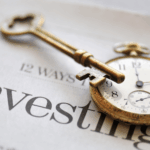Kroger, one of the leading grocery chains in the United States, has reported an increase in its sales for the second quarter of 2025. As the economic landscape remains challenging, consumers have increasingly turned to grocery shopping, opting to prepare meals at home more frequently. This shift is attributed to financial concerns among low and middle-income households who are seeking to stretch their budgets by leveraging promotions and purchasing in smaller, yet more frequent quantities. These economic adjustments reveal the broader trends affecting consumer behavior and spending in the grocery retail sector.
A comparison of recent reports highlights Kroger’s resilience amid economic pressures. Sales increased by 3.4% for the quarter, a significant rise from the 1.2% boost seen during the same period last year. Historically, the company’s adaptability in leveraging private-label products has helped them maintain price competitiveness, delivering value to consumers focused on budget-friendly options. This adaptability remains a significant driver in mitigating the impact of current economic challenges, as highlighted by interim CEO Ron Sargent’s observations on consumer stress levels.
How Are Consumers Coping with Rising Prices?
In the recent earnings call, Ron Sargent pointed out that consumers exhibit caution due to economic uncertainty. Kroger observes an increase in private-label product sales and coupon usage.
“Customers are feeling pretty stressed about the economy. They’re doing things to save money,”
he noted, indicating that households are prioritizing essentials over discretionary items like snacks and beverages. Despite this cautious stance, higher-income households continue to indulge in premium products, yet remain wary of increasing costs.
What Is Kroger’s Strategy for Order Fulfillment?
Kroger is refining its fulfillment strategy to meet growing demands for quicker delivery services. The company’s collaboration with Instacart enhances its delivery capabilities, optimizing its extensive store network to reduce delivery times. Interim CEO Ron Sargent emphasized the importance of expedient service, remarking on the growing preference for home delivery over store pickups.
“We are seeing a clear trend of customers opting for faster delivery times,”
he said, underscoring the company’s strategic alignment with consumer expectations in eCommerce
David Kennerly, Kroger’s Chief Financial Officer, provided insights into the company’s approach to pricing amid global market fluctuations. He remarked that tariffs have not significantly impacted Kroger’s pricing strategy. The company is committed to price stability by raising prices only as a last resort, ensuring affordability for its customers. As a result, Kroger maintains its focus on delivering value through competitive pricing and customer-centric strategies.
The grocery sector is undergoing a considerable transformation as consumer behaviors shift towards cost-saving measures. Kroger’s recent performance sheds light on broader industry trends, revealing how companies are navigating economic uncertainties. By emphasizing home dining and streamlined delivery services, grocery retailers can cater to evolving consumer needs effectively.
Kroger’s ability to increase sales amidst financial pressures is noteworthy, indicating the robustness of its operational strategy. The continued focus on affordability and efficient delivery positions the company well for growth. As grocery retail continues to evolve, companies like Kroger must prioritize understanding consumer preferences and adjusting their offerings accordingly.









